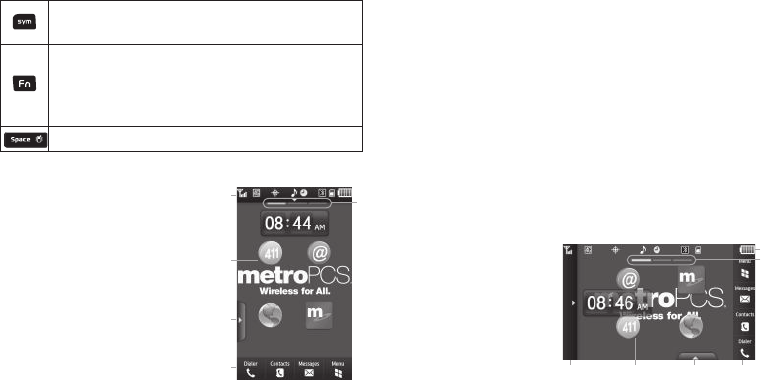
13
Understanding the Display Screen
1. The top line of your phone’s
display usually contains icons
that indicate network status,
battery power, signal strength,
connection type, and more.
Home screens, like this one,
also show a downward
pointing arrow head on this
line. This indicates that
touching this line opens the
Home screen Shortcut Bar. (For
more information, refer to “Shortcuts” on page 16.)
2. The center portion of the display shows Widgets, Weblinks,
Shortcuts (
Clock
,
metro411
,
@metro
,
metroWEB
, and
metroSTUDIO
Widgets are shown here), and information
such as call progress information, messages, and photos.
3. Touching is tab opens the Widget tray, from which you can
move additional Widgets onto a Home screen panel.
4. The bottom line of the display shows available shortcuts or
buttons. The sample screen shows the following shortcuts:
• Dialer
— Launches the Dialer screen that lets you place calls.
•Contacts
— Launches the
Contacts
menu.
•Messages
— Launches the
Messages
menu.
•Menu
— Launches the Main Menu.
5. Three virtual lamps in the second line of the display
indicate which Home screen is currently showing. The
sample screen indicates Home screen 1 is showing.
With the QWERTY keypad
open, the display rotates
automatically from
portrait mode (as shown
above) to landscape
mode (as shown here).
Press to pop-up the first of three pages of symbols in
which you can select desired symbols.
Press once to enter Fn mode for a single character or
keypad symbol.
Press twice to toggle from Abc mode to FN mode.
Press once more to return to Abc (abc) mode.
Press to insert a space in a text entry.
